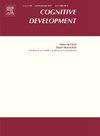Cognitive factors contribute to the symbolic and the non-symbolic SNARC effects in children and adults
Abstract
The SNARC effect is a phenomenon in which the left hand reacts quickly to small numbers, and the right hand reacts quickly to large numbers. In this study, the symbolic and non-symbolic SNARC effects between 9-year-old children and adults were compared, and the cognitive mechanisms underlying these effects were examined in both groups. The findings indicate that children and adults exhibit significant symbolic and non-symbolic SNARC effects, with children having a stronger non-symbolic SNARC effect than adults. According to path analyses, visual perception and phonological awareness played important roles in children’s symbolic SNARC effect, whereas inhibitory control played an important role in adults’ symbolic SNARC effect. Three-dimensional mental rotation and phonological memory accounted for significant variance in the non-symbolic SNARC effect in children and adults. Working memory did not significantly contribute to symbolic or non-symbolic SNARC effects in children and adults. In sum, our findings would not only help understand the theoretical relationships among various cognitive skills and SNARC effects but also help to develop age-appropriate intervention programs related to the nature of spatial-numerical associations.

 求助内容:
求助内容: 应助结果提醒方式:
应助结果提醒方式:


